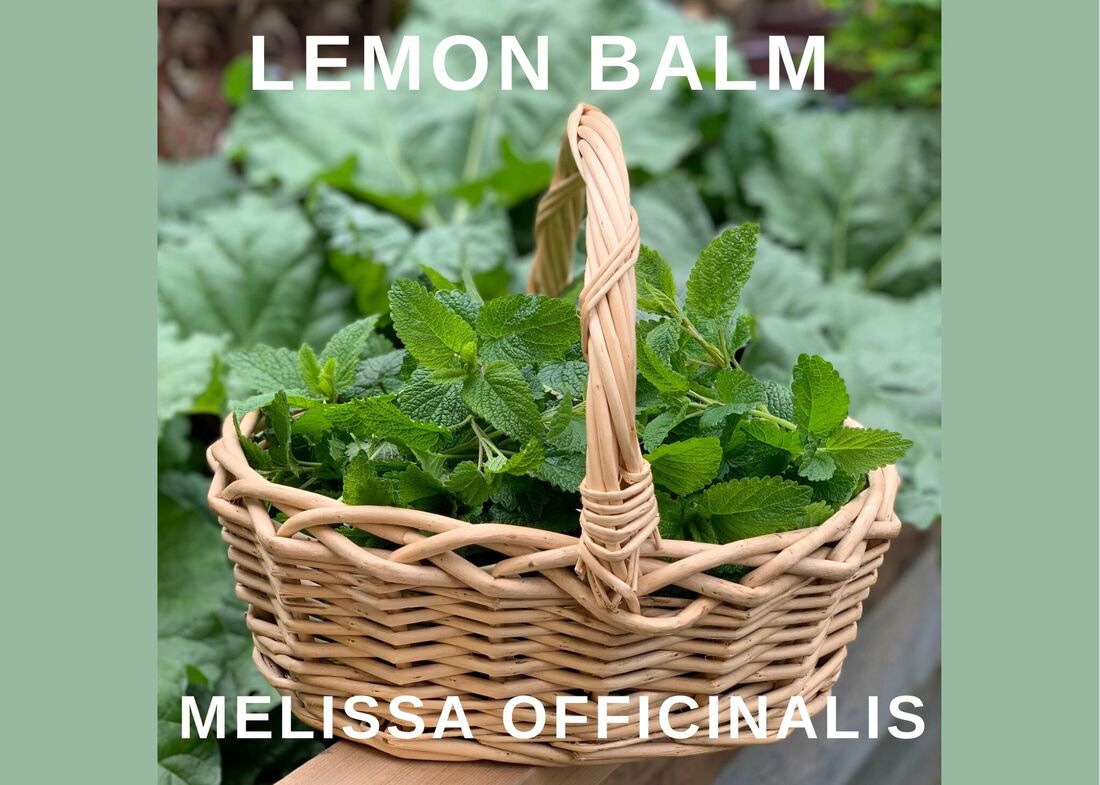|
Its very nearly May. Waking up this morning, despite the clouds, there was a soft warmth in the air, the birds were singing, and both herbs and vegetables are popping up in all of my garden beds. This is also a time that the air is fragrant with the scent of lemon balm as the plant's volatile oils begin to warm up with the morning sunshine. Lemon balm holds a long history in herbal tradition. It is a beautiful springtime plant that stretches its blooms into summer. It has been extremely popular in both kitchen and medicinal gardens since the early middle ages (and earlier). Lemon balm holds great importance in European domestic medicine as a drinkable spirit or basic nervous system sedative. The genus Melissa is widely diffused, having representatives in Europe, middle Asia, and North America. The name is from the Greek word signifying ‘Bee’, indicative of the attraction the flowers have for those insects, on account of the honey they produce. The word Balm is an abbreviation of Balsam, the chief of sweet-smelling oils. It is called this due to its honeyed sweetness. It was highly esteemed in ancient times by Paracelsus, who believed it would completely cure any ailment. I hope you enjoy this bit of information about this very common but exceptionally powerful herbal ally. In the following you will find gathered information about its common uses, its actions, constituents, pharmacy, historical and traditional usage, contraindications and warnings, clinical studies, and its usage in both aromatherapy and as a hydrosol. As with any form of herbal medicine, the below information is not meant to replace medical advice or prescriptions from your Medical Doctor. All information below is based off of Materia Medica texts and comes from published and historical sources. References have been included at the end of the article. Family: Labiatae Parts Used: Leaves and Flowers/ All aerial parts Other Common Names: Balm, Balm Mint, Bee Balm, Blue Balm, Garden Balm, Sweet Balm, Cure-all, Dropsy Plant Actions: Anxiolytic (no formal studies done) Antihistamine Carminative Cooling Anti-viral (topical) Antimicrobial Sedative Anti-stress Hepatic Calming Anti-flatulent Trophorestorative Diaphoretic Febrifuge Mild vasodilator Antispasmodic Nerve relaxant Anti-depressant Heart-sedating effect Anti-bacterial (myco-bacterium phlei and streptococcus haemolytica) Chemical Constituents:
What are its uses?Head, Ears, Eyes, Nose, and Throat:
Integumentary System (Skin):
Nervous System/Mental Health:
Respiratory System:
Digestive System:
Endocrine System (Hormones):
Cardiovascular System:
Reproductive System:
Specific Diseases/States/Infections/Viruses/Bacteria:
Combinations:
PharmacyMax Daily Dose: 1:2 @45% Liquid Extract - 3 to 6ml Max Weekly Dose: 1:2 @45% Liquid Extract – 20 to 40ml Applications: Infusion:
Best as a fresh tincture made in the spring when the plant is still tender and before it blooms.
Clinical Studies
Safety Concerns/Contraindications
References
7 Comments
|
Petra Sovcov is not a Medical Doctor (MD) nor a Naturopath (ND), she is a Clinical Herbal Therapist (CHT) and holds a Doctorate in Natural Medicine (DNM). The suggestions or recommendations made on this site are not meant to be a substitute for advice from your MD, or as a substitute for any prescriptions you may be taking. Suggestions followed will be the responsibility of the reader, and are stated with the intention of interest and education only. If you have a health issue, please see your primary care physician (MD) first and foremost. Categories
All
Archives
July 2024
|


 RSS Feed
RSS Feed